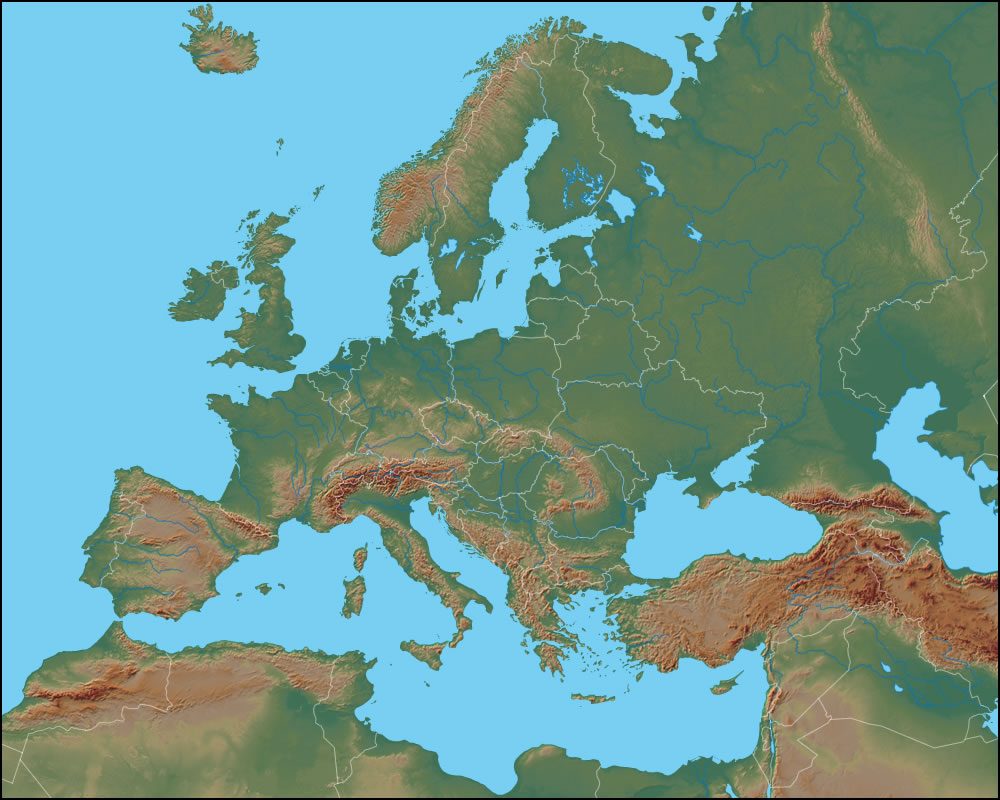
I promised an #Enceladus thread yesterday; it starts here! Let's take a look at this tiny, but all the more interesting icy moon of Saturn! 🪐 
https://twitter.com/People_Of_Space/status/1391834523294437384

Though discovered already in the late 18th century by William Herschel, we had long known extremely little about it. 🔭
That changed with the Voyager flybys! 🛰️
That changed with the Voyager flybys! 🛰️
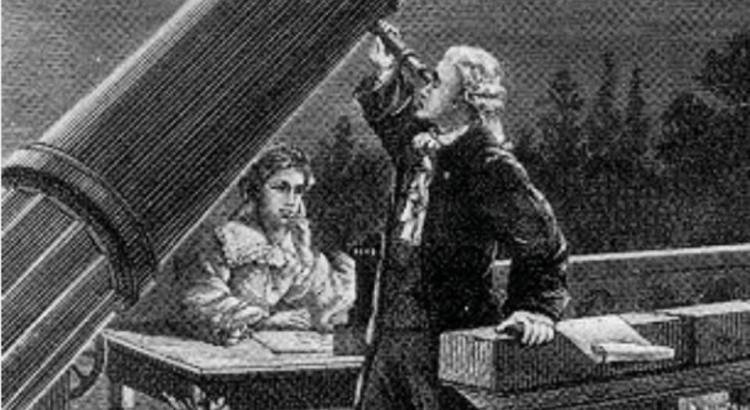
This image was taken by Voyager 2 on August 25, 1981, from about 110,000 km away. It shows cratering, but also bright ice, grooves, some crater-poor areas. That suggested parts of the surface were very young - the tiny moon was active! 
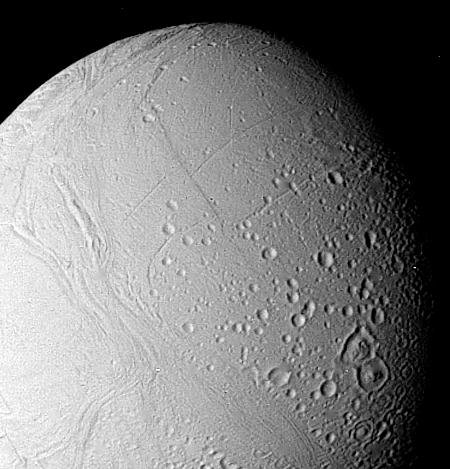
Here's a mosaic from Voyager 2 images showing the marked difference between the cratered northern hemisphere and the crevassed young terrain of the southern one. Something was going on! 

I keep saying "tiny" moon. How tiny exactly?
It's about 500 km across (our Moon is nearly 3,500 km across) - about the length of the Czech Republic, where I live, from west to east!
In the comparison, Enceladus is in near the lower left corner.
It's about 500 km across (our Moon is nearly 3,500 km across) - about the length of the Czech Republic, where I live, from west to east!
In the comparison, Enceladus is in near the lower left corner.

That was a puzzle! Anything *that* tiny shouldn't be very geologically active.
(Sure, comets are despite their much smaller size, but that's caused by great differences in the amount of sunlight in their elongated orbit - which is not the case for Enceladus!)
(Sure, comets are despite their much smaller size, but that's caused by great differences in the amount of sunlight in their elongated orbit - which is not the case for Enceladus!)
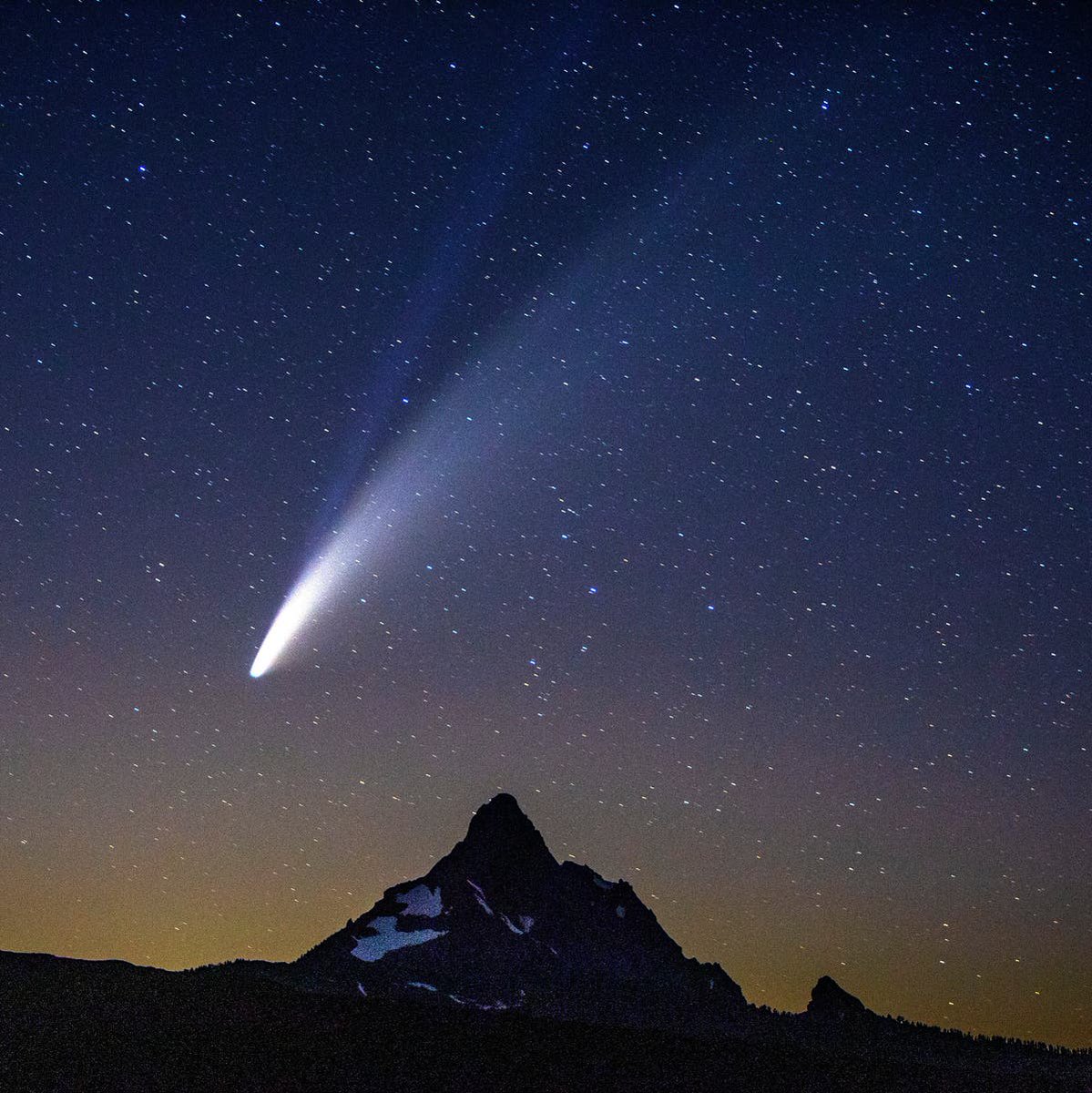
A little moon like Enceladus couldn't have kept its initial accretion heat to drive active geology, nor could it have many radiogenic heat sources.
'External' heating was required: tides!
(Back after a short break :)!)
'External' heating was required: tides!
(Back after a short break :)!)
It wasn't the first time we'd seen something like this: Europa! But Europa is much larger (like our Moon), able to retain some original heat sources, and it was expected to be tidally heated much more.
Enceladus remained more mysterious... but only Cassini told us more later.
Enceladus remained more mysterious... but only Cassini told us more later.

In the 1980s after the Voyager flybys, it was sometimes speculated that Enceladus might have some subsurface liquid water. These speculations focused mostly on Europa; Enceladus occasionally got a brief mention, like here (not even in the abstract). ⬇️
sciencedirect.com/science/articl…
sciencedirect.com/science/articl…
But with the Cassini 🛰️ arriving to 🪐 in 2004, everything changed. Once it got to closely observing Enceladus in 2005, it spotted something fantastic: geysers! 

It confirmed Enceladus as the source of Saturn's thin icy E ring, and most of all showed there was GREAT activity on this tiny moon! Each time it got farthest on its orbit around Saturn, it spewed plumes from cracks near its south pole. 

WHY, though? What drove this insane activity? How could there be liquid water underneath the pole, the source of these plumes?
At first, it was thought the interior of the moon looked like this... ⬇️
At first, it was thought the interior of the moon looked like this... ⬇️

When I wrote this popular science article about subsurface oceans and their potential for life for @clarkesworld in 2014, that was still the prevailing view...
clarkesworldmagazine.com/novakova_04_14/
clarkesworldmagazine.com/novakova_04_14/
Needless to say, science is ever-changing with new data and new models trying to explain it!
After another break, we'll see how we found out Enceladus in fact looks somewhat like this inside...
After another break, we'll see how we found out Enceladus in fact looks somewhat like this inside...

We're back! We've seen Enceladus' geysers, learned that tidal heating (periodic 'squashing' of the moon by gravitational differences on its slightly eccentric orbit; we know this best as oceanic tides on Earth, caused by the Moon's gravity) was likely responsible for them...
...but much more heat was observed around the geyser-spewing south polar cracks, dubbed 'tiger stripes', than expected from the moon's eccentricity! Models also suggested any liquid water reservoirs should have frozen a long, long time ago. Some piece of the puzzle was missing! 



Another surprise came in 2015: Gravity data and libration ('wobble' of the moon around its axis) suggested a global rather than smaller south-polar ocean on Enceladus! They could be explained only by a thinner icy shell unconnected to the rocky core.
sciencedirect.com/science/articl…
sciencedirect.com/science/articl…
Subsequent works showed that the icy shell was *very* thin, especially near the south pole - just a few km there!
Here's a model of the ice thickness. ⬇️ It was peculiar: what heat source could have kept ocean liquid & ice so thin on Enceladus?
agupubs.onlinelibrary.wiley.com/doi/full/10.10… @GeoPraha
Here's a model of the ice thickness. ⬇️ It was peculiar: what heat source could have kept ocean liquid & ice so thin on Enceladus?
agupubs.onlinelibrary.wiley.com/doi/full/10.10… @GeoPraha

Let's for a moment stop at the tides... The amount of heat you can generate depends on whether and how you can 'squash' the material on which you exert gravitational influence. If you had a perfectly solid, homogenous, 'immovable' object, you wouldn't get substantial heating.
But if something responds 'right' to the changing gravitational pull... Enter the 'fluffy', porous core! If we have a less consolidated rocky core water can flow through, we can make more heat by tides AND by water-rock reactions!
sciencedirect.com/science/articl…
nature.com/articles/s4155…
sciencedirect.com/science/articl…
nature.com/articles/s4155…

Coupled with tidal stress in the shell, at the cracks, & dynamics of the ocean itself, tidal heating in core could generate enough heat to conceivably keep the Enceladan ocean liquid. Thanks to scientists from @GeoPraha, @NASAJPL, @UnivNantes etc., one mystery was likely solved.
Still, more mysteries remained: How old was Enceladus anyway? Did it form 4.5 Ga like the rest of the Solar System, or later, maybe after a collision destroying some bigger moon? (How old are Saturnian rings anyway?) And why does Mimas, similar in size, apparently have no ocean? 

While the 'tidal part' may have been slightly technical, it was important for Enceladan #astrobiology as well, and I promise we'll get to the life prospects after shortly addressing the above-mentioned mysteries - in a few hours' time! 

With my potential future astrobiologist finally falling asleep, we're back!
Mystery 1: How old are the inner moons of Saturn, including Enceladus?
Mystery 1: How old are the inner moons of Saturn, including Enceladus?

The age of Saturn's *rings* have been under debate for some time. They are very bright, 'clean', and huge - could they have persisted since the origin of the Solar System, or have they formed in their current size more recently? 🪐 

For the moons, though, it comes down to long-term changes in their orbit expected with the measured tidal dissipation in Saturn. Put simply, the mutual gravitational influences should cause the moons to migrate outward... 

...but a numerical simulation by Cuk et al. (2016) showed that the inner icy moons would have gotten to their current positions in a mere 100 million years!
Could they really be so young, formed perhaps after the destruction of an earlier large moon?
iopscience.iop.org/article/10.384…
Could they really be so young, formed perhaps after the destruction of an earlier large moon?
iopscience.iop.org/article/10.384…
I really can't provide an answer or even an informed enough opinion on that; as a biologist, I can just gape at these simulations in awe! 🤷♀️
But since then, many other papers came out, some contesting the 'early Enceladus (and its neighbors)' theory.
But since then, many other papers came out, some contesting the 'early Enceladus (and its neighbors)' theory.
It's possible our data on tidal dissipation in Saturn need to be refined. Other simulations ⬇️ showed e.g. that some of the inner icy moons may be old, some young. What does it say? The science is constantly evolving & we need to go back to measure more!
ncbi.nlm.nih.gov/pmc/articles/P…
ncbi.nlm.nih.gov/pmc/articles/P…
I had to mention it because it's important for the Enceladus-Mimas paradox and Enceladus' habitability.
First: What's the paradox?
First: What's the paradox?

Mimas and Enceladus are almost the same size, both icy. Mimas orbits closer around Saturn than Enceladus and has greater orbital eccentricity - so it should get tidally heated more!
But the surface of Mimas appears old; darker, heavily cratered, with no signs of cryovolcanism.
But the surface of Mimas appears old; darker, heavily cratered, with no signs of cryovolcanism.

It may come down to their potentially different age or, perhaps more likely given Mimas' heavy cratering (doesn't look like it's formed recently!), different response to tidal forces.
Remember the 'fluffy core'?
Mimas has a density much lower than Enceladus, meaning less rock.
Remember the 'fluffy core'?
Mimas has a density much lower than Enceladus, meaning less rock.

In the end, it may be simply a 'cosmic accident' of Enceladus being slightly larger, with a more massive core, and events in the past (larger eccentricity?) kept its ocean liquid, so the core could stay porous, with flowing water, and more responsive to tides. Positive feedback!
While other Saturnian moons have inner oceans too (Titan, likely Dione, less likely Rhea), the Enceladan ocean is extremely interesting from the astrobiology viewpoint because of the sampling accessibility - it spews water into space!
Could there be life - and could we find it?
Could there be life - and could we find it?

Cassini 🛰️ flew through the plumes several times and sampled them! While not equipped for life detection, it found lots of great things!
The ocean appears about as salty as Earth's oceans - but more alkaline. So far so good.
It also contains simple organics.
The ocean appears about as salty as Earth's oceans - but more alkaline. So far so good.
It also contains simple organics.

With its composition, it appears to have all the basics needed for life as we know it - liquid water, chemical and energy gradients, compounds we know are involved in biogenic reactions on Earth.
It's also got molecular hydrogen - that speaks of low-heat hydrothermal activity!
It's also got molecular hydrogen - that speaks of low-heat hydrothermal activity!

It's called serpentinization; reactions of certain minerals with water produce H2, which on Earth methanogens 'eat' and produce methane (also found on Enceladus - but that's NOT reliably a sign of life, abiotic reactions can make it too).
Here's these 'white smokers' on Earth.
Here's these 'white smokers' on Earth.

Similar vents are likely present on Enceladus, producing heat, molecular hydrogen; exactly those energy/chemical gradients life loves! Detection of silicon-rich grains in the plumes also supports existence of hydrothermal vents.
Finally, heavier, complex organics were found too.
Finally, heavier, complex organics were found too.

To recap, Enceladus has an ocean that appears to have everything needed for life, and we don't have to devise any elaborate drilling or melting machinery to get samples - just flow through the geysers with a sufficiently equipped spacecraft! Sample return was also debated. 

Two main points make Enceladus a compelling life-search target in my opinion:
1. We know A LOT about its ocean (unlike Europa's and others), and it speaks of potential for life.
2. The samples are readily accessible - unlike almost anywhere else.
Let's go...
1. We know A LOT about its ocean (unlike Europa's and others), and it speaks of potential for life.
2. The samples are readily accessible - unlike almost anywhere else.
Let's go...

Many Enceladus missions were proposed, even combined Enceladus-Titan missions.
In the end, Dragonfly will be heading to Saturn - to explore Titan.
It's a great mission & Titan is extremely interesting from basically any point of view.
Still, we need to return to Enceladus too.
In the end, Dragonfly will be heading to Saturn - to explore Titan.
It's a great mission & Titan is extremely interesting from basically any point of view.
Still, we need to return to Enceladus too.

One day, we will. So far it's especially on @NASA. @esa doesn't have plutonium for radioisotope thermoelectric generators, which would be a great advantage over solar panels so far from the Sun. @roscosmos could potentially build RTGs, but it's never launched a mission like this. 

International collaboration would of course be most desirable for an ambitious mission!
Here are some of the concepts that haven't made it yet:
futureplanets.blogspot.com/2017/01/explor…
lpi.usra.edu/opag/meetings/…
planetary.org/articles/meet-…
Here are some of the concepts that haven't made it yet:
futureplanets.blogspot.com/2017/01/explor…
lpi.usra.edu/opag/meetings/…
planetary.org/articles/meet-…
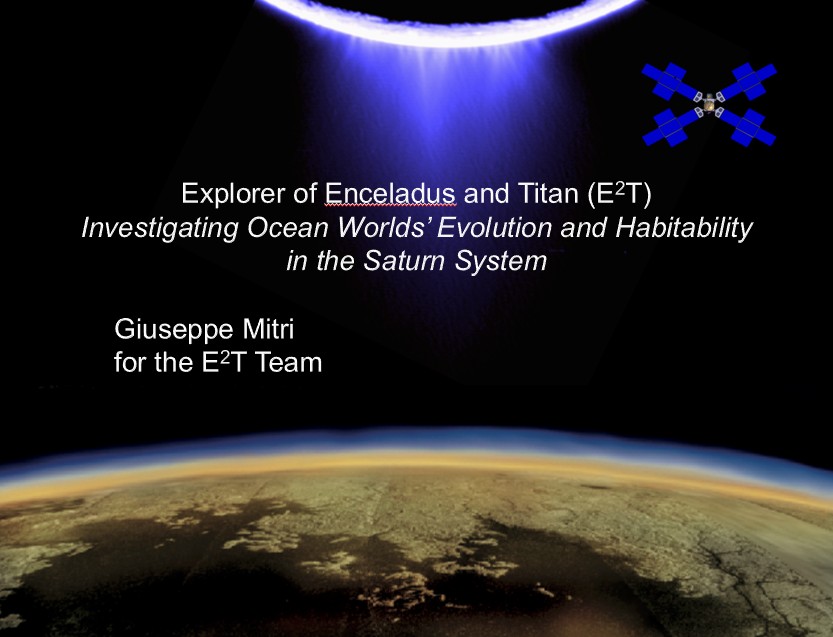
I don't know what mission we'll return to Enceladus with and how it's going to go; but one day, we'll go back, and I can't wait for that moment. 

Links to papers for those interested more in-depth in the composition of the Enceladan ocean:
sciencedirect.com/science/articl…
nature.com/articles/natur…
science.sciencemag.org/content/356/63…
ncbi.nlm.nih.gov/pmc/articles/P…
sciencedirect.com/science/articl…
nature.com/articles/natur…
science.sciencemag.org/content/356/63…
ncbi.nlm.nih.gov/pmc/articles/P…
Experiments with Earth microbes under Enceladus-like conditions have shown promising results, too! Ruth-Sophie Taubner (of @jkulinz, @EAIastrobiology) is one of the leading researchers exploring these questions.
nature.com/articles/s4146…
nature.com/articles/s4146…
You can still pledge for a virtual tour of her lab doing high-pressure, Enceladus analog biological experiments. The tour is a part of the #LifeBeyondUs outreach project (with only nine more hours to go, though).
bit.ly/LifeBeyondUs
bit.ly/LifeBeyondUs
I'll be occassionally adding more articles of relevance to the thread later, but this concludes the main part. Thank you all for exploring Enceladus this way with me, and good night! 

• • •
Missing some Tweet in this thread? You can try to
force a refresh








